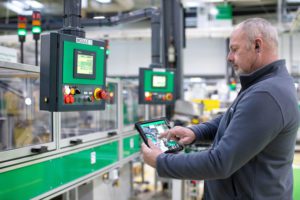The Industrial Internet of Things (IIoT) is impacting all industrial applications, and HVAC is no exception. It is a new, large, and complex topic for OEMs. The technology is arriving very quickly and is challenging the ways we think about cybersecurity, connectivity, apps, analytics, and services. But it also offers a wide array of benefits. It’s providing users with better communication, remote control and monitoring, and predictive maintenance tools.
End users and facility managers alike will also see the benefits of the IIoT in both residential and commercial buildings. For example, they’ll save money by being able to react quickly to drifts in energy consumption or enjoy improved comfort through the capacity to remotely adjust room temperatures.
OEMs will have to manage this shift by implementing connectivity between the machines and the cloud, improving their web services with real-time applications, and providing more online content. Ultimately, though, they’ll be able to provide better services and smarter machines for their customers.
What is a smart HVAC machine?
In the context of HVAC machines, “smart” means more flexible, connected, efficient, and safer than traditional HVAC machines. Smart means users can connect to their machine wherever they are using standard mobile devices and wireless systems for remote access. Forgot to turn off (or on) the air conditioning? Not a problem…
Smarter is better
The smart HVAC segment is growing faster than the overall HVAC market in part because smart technology – like monitoring and analytics capabilities – makes it easier for machine builders and end users to comply with regulations around proven energy efficiency and green buildings.
Total cost of ownership is also reduced thanks to embedded predictive maintenance tools that help service or maintenance teams be more efficient. No more unnecessary dispatches to check the machines. Now, they only come when needed.
Good for the planet, good for the bottom line
Globally, HVAC and refrigeration applications are responsible for about 15% of electricity consumption – which is huge! – so improving HVAC energy efficiency through smart features will have a direct effect on global warming. What’s more, HVAC equipment accounts for roughly 40% of the total energy consumption of a building, which is why efficient machines are in such high demand.
Scratching the surface
I believe that today we have only a fraction of what we will have in 10 years’ time in terms of technology and smart capabilities. Digitization is still in its infancy and something that will continue to drive important new services and capabilities. Over time, smart HVAC machines will continue to get smarter for the benefit of us all.
What would you like to see smart HVAC machines able to do? Leave us a comment below…

